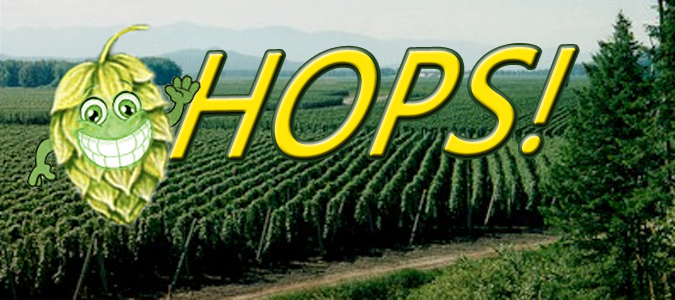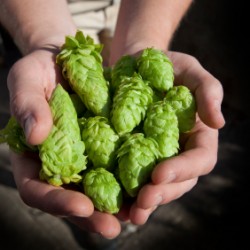
You can’t underestimate the importance of hops in brewing or their impact on the modern craft beer industry. One of beer’s four main ingredients, (which also includes grain, yeast, and water), hops play a hugely important a role today’s craft beer world, yet for many they remain a mystery.
So here are some surprising hop factoids guaranteed to make you a barroom genius!
Hops Weren’t Always A Core Beer Ingredient
Yes it’s true. While people have been brewing for eons, the introduction of wild hops into the mix is relatively new.
Men’s Journal reports that “the earliest recorded use of wild hops in beer was in 822, but organized hop cultivation didn’t begin in earnest until the 1100s in modern day Germany,” so we’re going with that.
Hops Bitter And Better
We’d be worried if you didn’t already understand that hops are a bittering agent that provide welcome flavor, aromatics and help counter the intrinsic sweetness of malts.
Some hop varieties are more effective in contributing to a beer’s taste, others a beer’s aromatics, and some conveniently advantage both.
Alpha hops have a higher alpha acid percentage. These kinds of hops are more often used in beer’s the boiling process to extract bitterness.
Aromatic hops can have a less alpha acids and they tend to be added later in the boil. And their abundant usage can contribute to both the nose and the tongue.
Hops Are Picky About Where They Grow
Although hops are grown in different regions around the world, they’re super-picky about where they can flourish. And latitude and climate play a big part in where they grow best.
The sweet spot for hops is between the 35th and 55th parallels in both hemispheres. This concise latitudinal range allows for long and hot summer days, and equally as important, cold winters which nurture the dormant plant
All of the world’s major hop growing regions from the Pacific Northwest of the United States to England, Belgium, and Germany in Europe and the emerging New Zealand industry in the Southern Hemisphere are found between these uber-specific parallels.
Hops Are Bines Not Vines
Hops are incessant climbers which take to these trellises enthusiastically but they’re not vines – technically hops are bines.
Vines are plants that climb upward by sending off tendrils or suckers for support. Bine weave their way upward, growing clockwise around the trellis. Tiny downward bristles also help to support the plants as they spiral upward following the sun’s movement from sunup to sundown.
Hops Can Grow to 18 Feet In Height
If you ever visit a hop farm at its peak you’ll confronted with walls of plant trellises that soar to the sky and shadowy lush crop canyons you can hike through.
In fact hops grow so tall that may hop farms have to build their own specially designed harvest equipment. Harvesting vehicles that are scrutinized and rejiggered every winter to ensure that they don’t break down during harvest season.
You see hop harvest is a critically short period (mid-August and September in the Northern hemisphere) and an equipment breakdown during that small window of time could endanger the whole year’s efforts.
 American Craft Beer The Best Craft Beer, Breweries, Bars, Brewpubs, Beer Stores, And Restaurants Serving Serious Beer.
American Craft Beer The Best Craft Beer, Breweries, Bars, Brewpubs, Beer Stores, And Restaurants Serving Serious Beer.
